We couldn’t be more thrilled to wrap up our Autism Awareness Month Interview Series with David Celiberti, PhD, BCBA. Dr. David Celiberti is the Executive Director of the Association for Science in Autism Treatment (ASAT) and provides consultation to public and private schools and agencies in the U.S. and Canada. Here, Dr. Celiberti shares his wealth of knowledge and experience in creating positive change in autism treatments through scientific research and high-quality education and support.
Don’t forget to check out the other interviews from our Autism Awareness Month Interview Series here!
Creating Positive Change in ASD Treatment
Through Science, Support, and Education
with David Celiberti, PhD, BCBA-D
SAM BLANCO: I consider the Association for Science in Autism Treatment (ASAT) to be an invaluable resource for both parents and practitioners. You serve as the Executive Director. Before we discuss ASAT, can you tell us a bit about your background?
DAVID CELIBERTI: First and foremost, thank you for the opportunity to participate in this interview, particularly as you are asking about topics that are near and dear to my heart. I have been fortunate to have a career in the treatment of autism spectrum disorders (ASD) where the journey has been just as reinforcing as the destination. I continually urge young people to work hard at finding a career path consistent with their passions. Among my many reinforcers in the field of ASD treatment are interactions with parents and siblings who did not choose a life that included ASD, but still love unconditionally, roll up their sleeves and embrace powerful roles as agents of change. Additionally reinforcing has been my collaboration with myriad professionals, particularly those who are grounded in, and informed by, science. Perhaps most inspiring, though, are the individuals with ASD themselves who work so hard to acquire new skills, learn effective strategies for negotiating their experiences, and remind us daily that science-based treatments, such as applied behavior analysis (ABA), truly make a difference.
I currently serve as the halftime Executive Director of ASAT. I view this role not as a job but as a “lifestyle”, and I am so proud of what ASAT accomplishes every year, even with a tiny operating budget. We have an incredible board of directors from diverse professional backgrounds such as special education, behavior analysis, psychology, social work, sociology, law, medicine, speech-language pathology, computer science, family advocacy and business. Many of our board members have family members with ASD. Their commitment to helping other families and professionals find a clearer path to effective intervention is astounding to me. We also have scores of volunteer coordinators, externs, and an active Media Watch team who do much of the “heavy lifting”, helping ASAT remain productive, current, and responsive to the needs of the autism community.
SB: For those out there who aren’t familiar with ASAT, can you talk a little bit more about the organization’s mission and why it continues to be such an essential resource?
DC: With respect to our mission, we improve the quality of life for individuals with ASD and their families by promoting the use of safe, effective treatments, which are grounded in science, for people with ASD. As you know, there are over 400 treatments for autism, with the vast majority lacking any semblance of scientific support. We achieve our mission by sharing accurate, scientifically-sound information with professionals, parents and journalists; and by countering inaccurate or unsubstantiated information regarding autism and its treatment as it comes up. Unfortunately, there is so much out there which distracts consumers from making the best possible choices. Our overarching goal is to help parents and providers become savvy consumers of information who can truly discriminate science from pseudoscience. This means being armed with the knowledge to ask practitioners and marketers of ASD interventions critically important questions related to the state of their science, consult with knowledgeable and impartial professionals about potential treatments, and establish methods for assessing the benefits of treatments when they are adopted by the family and their intervention team. It is absolutely heartbreaking that autism treatment has become the type of business in which parents of children with autism must work so hard just to sort through so many options and mixed messages just in order to help their sons and daughters.
For more information, your readers can visit ASAT’s comprehensive website at www.asatonline.org. On the website, they will find extensive information about the scientific support (or lack thereof) behind the full array of treatments proposed for autism; resources and guidelines on how to make informed choices and weigh evidence in selecting treatment options, and information for various groups such as parents of newly diagnosed children, parents of older individuals, teachers, medical providers, and members of the media community. We encourage people to revisit ASAT’s website often, as information about autism treatments is frequently updated to reflect the latest research, and new content is routinely added.
ASAT also publishes a free quarterly newsletter, Science in Autism Treatment. Sign-up information is available at https://asatonline.org/signup. The quarterly e-newsletter features:
- Invited articles by leading advocates of science-based treatment;
- A Clinical Corner which responds to frequently asked questions about autism treatment;
- A Consumer Corner which recommends resources that can guide and inform treatment decisions;
- A Focus on Science column which is designed to empower families to make educated treatment decisions by highlighting those elements that constitute science-based interventions as well as warning signs of unsubstantiated treatment;
- Detailed summaries of specific treatments for autism;
- Book reviews;
- Highlights of our Media Watch efforts and discussion of accurate, and inaccurate, portrayals of autism and its treatment by the media;
- Reviews of published research to help consumers and professionals understand and gain access to the science;
- Critiques of policy statements related to autism treatment; and
- Interviews with those who advance science-based treatment and confront pseudoscience.
Finally, your readers can also follow us on Facebook and on Twitter at @asatonline.
SB: You have dedicated a lot of your time to providing services for underserved populations, from direct services to organizing fundraisers that support organizations that serve economically disadvantaged children. Why is this an important area of work for you?
DC: When I was in graduate school in the late 1980s and early 1990s at Rutgers University under the mentorship of Dr. Sandra Harris, I was struck that only a tiny percentage of students with ASD were receiving the lion’s share of the available expertise and resources. This disparity was troubling to me as I recognized that there were scores of other children with ASD who were receiving “generic” special education services which did not yet incorporate state-of-the-art behavior analytic intervention. My hope was to one day dedicate a portion of my time to supporting students with ASD in inner city communities. As my career unfolded, I had the opportunity to work at the Rutgers Autism Program, where part of my duties focused on outreach. I started working in rural Maine in 1997, helping public schools develop and implement educational programs to students with ASD, and have now returned over 110 times! It is not that urban setting that I had envisioned as an idyllic graduate student; however, I quickly realized how rewarding it was to provide services in geographic areas that did not have the existing resources, and to assist public schools in providing high quality educational experiences.
Hoboken, New Jersey, where I live, is home to a significant number of economically disadvantaged students. I began to seek collaborative relationships between ASAT and other local organizations which focused on poverty. The common thread was the importance of providing children with meaningful, socially valid and effective opportunities to realize their fullest potential despite the myriad obstacles that they face. That resonated well with me as someone whose career focuses on the treatment of ASD. To date, my fundraising efforts have benefited four Hoboken-based organizations combating the barriers associated with poverty.
SB: I would like to go back to your reference about public school programs. In your view, what are some of the key elements of a high quality education for students with autism?
DC: This is such an important question! In a nutshell, a high-quality education would include the following elements:
- Be truly individualized – An educational plan should truly fit the child like a glove fits a hand. Services should not be about what a provider likes to do, but rather what the student needs, as determined through ongoing, valid assessment.
- Be comprehensive – A high quality education targets the full array of skills that will promote success at home, school and community and uses a wide range of techniques based on science that are well fitted to the skills being targeted.
- Keep the future in mind when selecting goals – The skills needed to be successful and marketable in the next setting (be that a particular job or even Mr. Walker’s 4th grade classroom) must be identified and addressed.
- Use well conceptualized behavior management strategies – When addressing challenging behavior, these strategies should take into account the underlying function of the behavior, include carefully selected antecedent and consequence based supports, and build skills to help students better meet their needs in a way which promotes their day-to-day independence and opportunities.
- Consider and offer inclusion opportunities carefully – Ensure that it occurs with the appropriate supports and is delivered by adequately trained staff. Social skill development does not occur through pure exposure alone; rather, skill acquisition occurs when inclusion is approached as a systematic, individualized process, with proper supports, monitoring of data, and a goal of challenging the individual with ASD while not overwhelming them, or inadvertently creating isolation.
- Carefully implement instruction, including modifications and accommodations – Promote early success and carryover, identify and use powerful motivators, and consider how to motivate students to work hard, to learn new skills, and to minimize frustration.
- Allocate resources thoughtfully – Intervention and teaching-team members need solid training in order to implement teaching procedures and services. Regularly scheduled team meeting promote coordination, particularly when multiple disciplines are involved.
- Engage parents – Not only is it important to continually seek input from parents about treatment priorities and goal selection, parents benefit from the training, collaboration, and information that will enable them to embrace their role as a co-pilot in their child’s intervention. This support should include siblings, grandparents, and other significant individuals for whom parents consent to their involvement. Engagement should occur throughout the educational journey and be adjusted to face the unique needs and challenges at each point in time.
- Take data collection seriously – Ongoing data collection enables one to objectively assess progress, make timely adjustments, and remain accountable to those we serve. No provider should get a “pass” on data collection.
- Start early and get it right from the start! – We know that early intervention can make an incredible difference. Don’t squander precious time on interventions that are not time-tested and research based.
SB: You’ve been instrumental in implementing change in many aspects of our field of ABA and ASD treatment in general. Do you have your thoughts on two or three areas that you think need to be addressed differently? How can we improve our work there?
DC: There is certainly room for improvement. Promoting science and science-based interventions such as ABA is not an area in which we have been very successful. Media representations tend to favor less science-based treatments, perhaps because their promoters use more sensationalized language when describing both their methods and their outcomes. Behavior analysts must take a closer look at how they market their work so that their outcomes can be more understandable and appreciated by various stakeholders (e.g., media, funding sources, consumers). We must also be more proactive in helping the media approach autism treatment in a more accurate manner.
Autism is clearly a spectrum disorder. In recent years, we have seen many higher functioning persons with ASD who have been very vocal; generously sharing their views about the appropriateness of treatment. Although their views and perspectives are important, I worry that the public, policy makers, and other important stakeholders may take these views as applicable to the entire spectrum. I believe this has the potential to do parents a tremendous disservice when they try to acquire the resources, tools, and experiences which will enable their son or daughter (who may not be on the upper end of the spectrum) to realize his or her fullest potential. On the other hand, one important take-away message is the importance of cultivating and celebrating the strengths of individuals with ASD rather than approach our work from a pure deficit model.
Another significant concern is that the hundreds of thousands of children with ASD who were diagnosed in the last two decades are growing up and becoming hundreds of thousands of young adults with ASD; as a society, we are failing them. When children with ASD turn twenty-one, funding for services drastically changes. As a result, there are very few quality programs for adults. We are facing a crisis in the field, with a scarcity of services for adults with ASD and the absence of a clear strategy for closing the gap between the ever-increasing need, and an unprepared supply of resources. Autism awareness must include important conversations about how we can help adults with ASD live and work independently, develop meaningful relationships, reduce challenging behaviors that may limit opportunities, access faith communities, and enjoy the array of recreational pursuits which are available within their communities. Those are important conversations to have and these conversations should translate into actionable items at every level of service delivery.
SB: With Autism Awareness month drawing to a close, what would you like the general public to know about autism treatment?
DC: Even though ASD is no longer the rare disorder it once was, each person with ASD is unique. Efforts to help them realize their fullest potential should be individualized to meet the specific needs of each individual with ASD across settings such as home, school, community and the workplace; and informed by input from the individual, as well as his or her family.
Do not believe everything you hear. There are dozens of purported “miracle cures” and “breakthroughs” for ASD which receive widespread media attention, even if they have not been proven effective. Sadly, effective treatments rarely gain media attention.
On a related vein, do not believe everything you read. Not all information on the internet is reliable and accurate, and celebrities are neither trained nor equipped to define or guide ASD treatment even though many appear comfortable in that role. On the other hand, there is a large body of research published in peer-reviewed scientific journals which should guide autism treatment. Visit our website to learn more at www.asatonline.org.
Lastly, there is hope and tremendous opportunity. With the right treatment, individuals with autism can lead happy and fulfilling lives. Research indicates that interventions such as ABA can effectively help children and adults with ASD realize their fullest potential. As stated earlier, we know that early and intensive behavioral intervention can make a huge difference, both with respect to human potential and significant cost savings across the lifespan.
SB: How can the general public make a positive difference?
DC: It cannot be overstated that it takes a village to help individuals with ASD learn to enjoy and benefit from all that their communities have to offer. Every member of the public can make a difference in supporting individuals with ASD and their families. There are so many positive ways the public can help. Although I will share several examples here, this list is by no means exhaustive:
- If you have a family member or a neighbor who has a child with ASD, ask specifically how you may be helpful (e.g., assist with siblings, offer play dates, help with transportation to therapies, or provide an empathic ear).
- If you see a family struggle in the community, do not stare, comment, or judge. In some cases, it may be appropriate to go over and assist (e.g., “I see you are helping your little guy, may I help you put your bags in the car?”). Family members may take you up on your kind offer or may just decline.
- If your children are interested, inquire if there are opportunities for them to help classmates with ASD at their school (e.g., becoming a lunch buddy, peer tutor). This is particularly beneficial in the later grades when opportunities for students with ASD to interact meaningfully with their typically-developing peers is lessened.
- At school board meetings encourage board members to learn about best practices in special education which are scientifically validated. Inquire if special education resources are being spent on interventions that lack scientific support or are not being spent on those that do possess such support (e.g., ABA). In fact, a research basis should inform most decisions.
- Some faith communities are very welcoming to families of individuals with ASD, whereas others are not. Discuss this within your place of worship. Identify steps that can be taken to help individuals with ASD participate in their religious communities in a positive and meaningful manner. This applies to both religious ceremonies, as well as day to day participation.
- Encourage organizations to be more accepting of persons with ASD and to take appropriate steps to learn how to create meaningful inclusion opportunities (e.g., seeking out information, soliciting training and education, learning from others who are doing this with success).
- If you are involved with youth sports or other extracurricular activities, offer to coach and/or mentor a player with ASD.
- Encourage your town or city to provide and/or create recreational opportunities that include individuals with ASD as there is often a tendency to focus only on separate experiences.
- Support ASD organizations that put science first. Research how your donations are used.
ABOUT DAVID CELIBERTI, PHD, BCBA-D
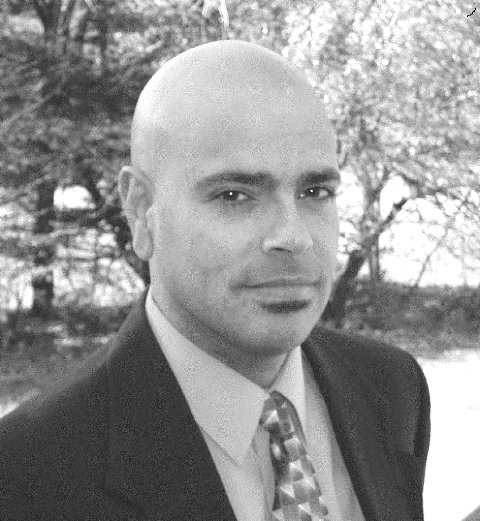 Dr. David Celiberti is the Executive Director of the Association for Science in Autism Treatment (ASAT). He previously served as the President of the Board of Directors of ASAT from 2006 through 2012. In response to the increasing number of parents attending professional conferences to learn about applied behavior analysis, he also founded the Parent-Professional Partnership SIG for the Association for Behavior Analysis International in 2000 and served as its Co-President until 2014. He had also served as President of the Autism Special Interest Group (SIG) from 1998 to 2006. He currently sits on a number of Advisory Boards in the area of autism, as well as in early childhood education. He has organized fundraising initiatives to support afterschool programming for economically disadvantaged children in Northern New Jersey. Dr. Celiberti is in private practice and provides consultation to public and private schools and agencies in the U.S. and Canada. He received his Ph.D. in clinical psychology from Rutgers University in 1993. He has authored several articles in professional journals and presents frequently at regional, national, and international conferences. He has taught courses related to ABA at both the undergraduate and graduate levels, supervised individuals pursuing their BCBA and BCaBA, and in prior positions had conducted research in the areas of applied behavior analysis, family intervention, and autism.
Dr. David Celiberti is the Executive Director of the Association for Science in Autism Treatment (ASAT). He previously served as the President of the Board of Directors of ASAT from 2006 through 2012. In response to the increasing number of parents attending professional conferences to learn about applied behavior analysis, he also founded the Parent-Professional Partnership SIG for the Association for Behavior Analysis International in 2000 and served as its Co-President until 2014. He had also served as President of the Autism Special Interest Group (SIG) from 1998 to 2006. He currently sits on a number of Advisory Boards in the area of autism, as well as in early childhood education. He has organized fundraising initiatives to support afterschool programming for economically disadvantaged children in Northern New Jersey. Dr. Celiberti is in private practice and provides consultation to public and private schools and agencies in the U.S. and Canada. He received his Ph.D. in clinical psychology from Rutgers University in 1993. He has authored several articles in professional journals and presents frequently at regional, national, and international conferences. He has taught courses related to ABA at both the undergraduate and graduate levels, supervised individuals pursuing their BCBA and BCaBA, and in prior positions had conducted research in the areas of applied behavior analysis, family intervention, and autism.

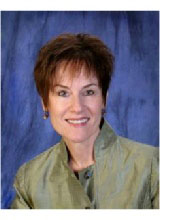 Dr. Barbara Esch, BCBA-D, CCC-SLP, is a behavior analyst and speech pathologist with more than 30 years of experience in behavioral interventions for individuals with developmental disabilities. She has worked in school, home, clinic, and hospital settings. Her workshops, training symposia, and research have been presented in the United States, Europe, and Australia, and focus on the use of behavioral procedures to improve speech, language, and feeding skills for individuals of all ages with a wide range of medical and educational diagnoses. Esch received her PhD in applied behavior analysis from Western Michigan University and her MA in speech pathology from Michigan State University. She is the author of the Early Echoic Skills Assessment, part of the Verbal Behavior Milestones Assessment and Placement Program: VB-MAPP (Sundberg, 2008). She is the founder and past chairperson of the Speech Pathology Special Interest Group of the Association for Behavior Analysis International. Her research on behavioral treatments for early speech acquisition appears in The Analysis of Verbal Behavior and the Journal of Applied Behavior Analysis. Esch is co-owner of Esch Behavior Consultants, Inc., a consulting company specializing in behavioral treatments for individuals with severe communication delays.
Dr. Barbara Esch, BCBA-D, CCC-SLP, is a behavior analyst and speech pathologist with more than 30 years of experience in behavioral interventions for individuals with developmental disabilities. She has worked in school, home, clinic, and hospital settings. Her workshops, training symposia, and research have been presented in the United States, Europe, and Australia, and focus on the use of behavioral procedures to improve speech, language, and feeding skills for individuals of all ages with a wide range of medical and educational diagnoses. Esch received her PhD in applied behavior analysis from Western Michigan University and her MA in speech pathology from Michigan State University. She is the author of the Early Echoic Skills Assessment, part of the Verbal Behavior Milestones Assessment and Placement Program: VB-MAPP (Sundberg, 2008). She is the founder and past chairperson of the Speech Pathology Special Interest Group of the Association for Behavior Analysis International. Her research on behavioral treatments for early speech acquisition appears in The Analysis of Verbal Behavior and the Journal of Applied Behavior Analysis. Esch is co-owner of Esch Behavior Consultants, Inc., a consulting company specializing in behavioral treatments for individuals with severe communication delays.



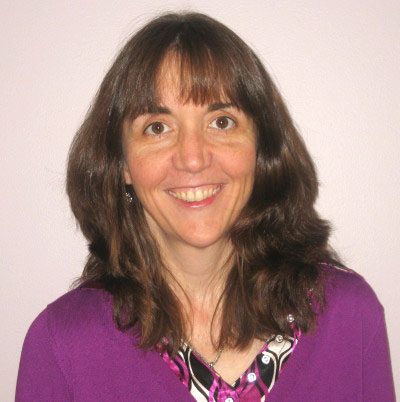 Mary Jane Weiss, Ph.D., BCBA-D has been working as a behavior analyst serving people with autism for over 25 years. She received her Ph.D. in Clinical Psychology from Rutgers University in 1990, and became a Board Certified Behavior Analyst in 2000. She is currently a Professor of Education at Endicott College, where she directs the graduate programs in ABA and Autism. She previously served as an Associate Professor at the Graduate School of Applied and Professional Psychology at Rutgers University, and as Director of Research and Training and as Clinical Director of the Douglass Developmental Disabilities Center at Rutgers University for 16 years. Her clinical and research interests center on defining best practice ABA techniques, on evaluating the impact of ABA in learners with autism spectrum disorders, and in maximizing family members’ expertise and adaptation. She is a regular presenter at regional and national conferences on topics relevant to ABA and autism. She is a past president of the Autism Special Interest Group of the Association for Behavior Analysis, a former member of the Association of Professional Behavior Analysts Board of Directors, and she currently serves on the ethics review committee of the Behavior Analyst Certification Board, on the Scientific Council of the Organization for Autism Research, on the Legislative Affairs Committee of the New Jersey Association for Behavior Analysis, and on the Board of Trustees of Autism NJ.
Mary Jane Weiss, Ph.D., BCBA-D has been working as a behavior analyst serving people with autism for over 25 years. She received her Ph.D. in Clinical Psychology from Rutgers University in 1990, and became a Board Certified Behavior Analyst in 2000. She is currently a Professor of Education at Endicott College, where she directs the graduate programs in ABA and Autism. She previously served as an Associate Professor at the Graduate School of Applied and Professional Psychology at Rutgers University, and as Director of Research and Training and as Clinical Director of the Douglass Developmental Disabilities Center at Rutgers University for 16 years. Her clinical and research interests center on defining best practice ABA techniques, on evaluating the impact of ABA in learners with autism spectrum disorders, and in maximizing family members’ expertise and adaptation. She is a regular presenter at regional and national conferences on topics relevant to ABA and autism. She is a past president of the Autism Special Interest Group of the Association for Behavior Analysis, a former member of the Association of Professional Behavior Analysts Board of Directors, and she currently serves on the ethics review committee of the Behavior Analyst Certification Board, on the Scientific Council of the Organization for Autism Research, on the Legislative Affairs Committee of the New Jersey Association for Behavior Analysis, and on the Board of Trustees of Autism NJ.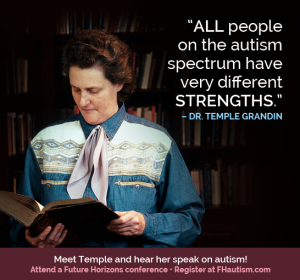 Temple Grandin and Jed Baker are speaking at this one day conference brought to you by Future Horizons.
Temple Grandin and Jed Baker are speaking at this one day conference brought to you by Future Horizons. Noncontingent reinforcement (NCR) is the presentation of reinforcement independent of behavior, and there are many studies out there that demonstrate it can have a significant impact on behavior.
Noncontingent reinforcement (NCR) is the presentation of reinforcement independent of behavior, and there are many studies out there that demonstrate it can have a significant impact on behavior.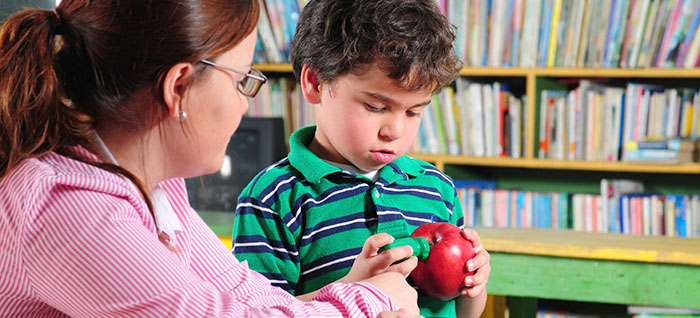
 Valentine’s Day Bingo
Valentine’s Day Bingo

 Recently I was working with a family to toilet train their son Jonathan, a six-year-old with autism. (Names and identifying characteristics have been changed to protect confidentiality.) When he eliminated in the toilet, part of his reinforcement was getting to watch the water go down the toilet after flushing. At some point, he developed the behavior of putting his hands into the toilet water as it was flushing.
Recently I was working with a family to toilet train their son Jonathan, a six-year-old with autism. (Names and identifying characteristics have been changed to protect confidentiality.) When he eliminated in the toilet, part of his reinforcement was getting to watch the water go down the toilet after flushing. At some point, he developed the behavior of putting his hands into the toilet water as it was flushing.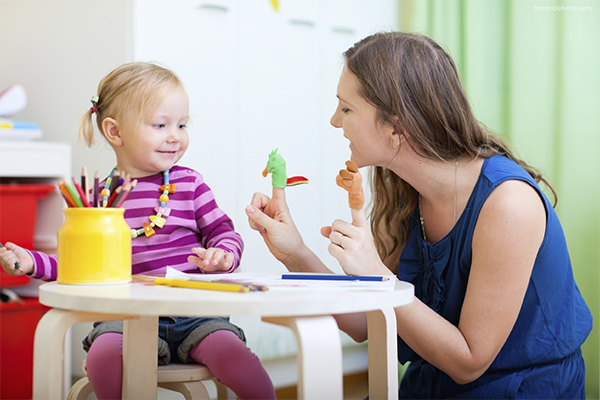 All of these mandates are essential to helping my students to progress, but they also serve to overlook my students’ strengths. There is little space on an IEP to focus on what my student is quite skilled at, or to detail a plan for encouraging those skills. The long-term implications of failing to nurture a student’s strengths range from increasing boredom and frustration in school to failing to prepare students for engaging careers.
All of these mandates are essential to helping my students to progress, but they also serve to overlook my students’ strengths. There is little space on an IEP to focus on what my student is quite skilled at, or to detail a plan for encouraging those skills. The long-term implications of failing to nurture a student’s strengths range from increasing boredom and frustration in school to failing to prepare students for engaging careers.